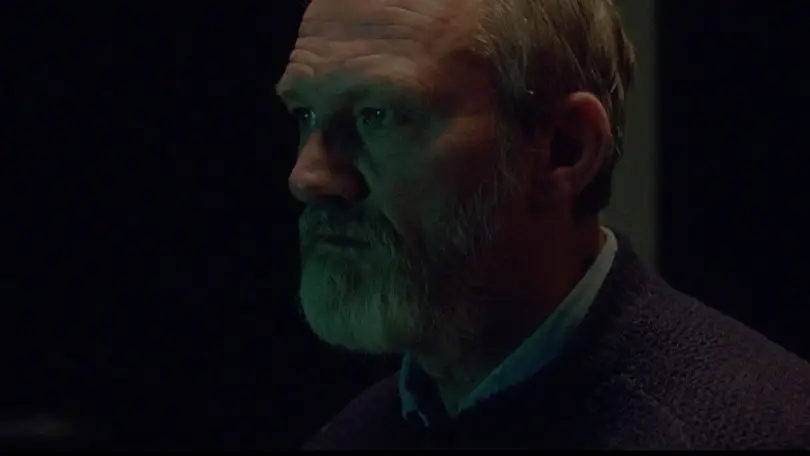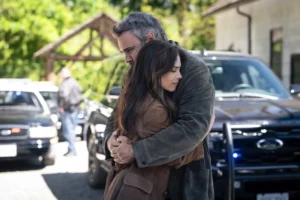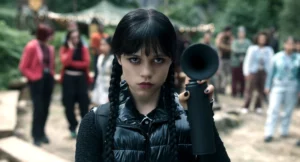Summary
A White, White Day is an Icelandic noir that, at times, has great power in the moments where a single, chilling nonverbal look from the great Ingvar Sigurðsson says everything you need to know that’s boiling beneath the surface.
A White, White Day (Hvítur, hvítur dagur) opens with a boxy car driving erratically and without a care in the world. It’s a wet, wet day; the road is slick, winding, and nestled in Icelandic foothills off its coast with steep drop-offs to the water below. The waters are always in constant motion and don’t care what is happening to the ones standing around it. There are no fog horns or warning signs; it even has small boulders falling from the hillside. In fact, there are no guard rails for long stretches. Hlynur Pálmason’s film is a noir that is wrapped in a metaphor for adult depression. A condition that creeps up on you with the potential of the person having little self-awareness of the warning signs and safeguards.
In A White, White Day a police chief in a small Icelandic town, Ingimundur (Ingvar Sigurðsson, in his Cannes’s Critic’s Week award-winning role) is still not over the passing of his wife (Sara Dögg Ásgeirsdóttir) who died in a car crash two years prior. He is renovating a house and frequently takes care of his granddaughter, Salka (newcomer Ída Mekkín Hlynsdóttir). He sees a therapist, but can’t let go of the feeling his wife was hiding a secret from him. As he tries to move ahead with his life, he can’t let go of the past or the obsession of finding out the truth.

A White, White Day was also written by Palmor and is a throwback to vintage Icelandic countryside obsessive dramas. It also has modern themes of mental health issues that are so prevalent today. The film has a unique feeling of “place” (there is a scene where kids are given sharp knives to break up chunks of ice without parental supervision and any notable concern). The stunning cinematography, by Maria von Hausswolff, and the natural beauty of the countryside gives the film a character all its own. Of course, the film is held up and driven by a stunning performance by Sigurðsson, in one of his best roles in years. It’s a complex role that ranges from sullen loneliness, depression, anger, rage, and ultimately, a healing acceptance.
The film could have benefited from a bit more structure that would have highlighted its downplayed, even low-key ending. For instance, the scene that it builds up to could have been partly shown in the opening scene then cut to the original opening of the erratic driving car. This would have given the theme of confronting his wife’s past greater closure and informed the stunning choice he makes after.
Still, it’s a noir that, at times, has great power in the moments where a single, chilling nonverbal look from the great Sigurðsson says everything you need to know that’s boiling beneath the surface. It’s a thriller that has the guts to make the unnecessary choice of sticking to its own principles by avoiding a flashy ending. That’s an unsafe choice in itself these days.



